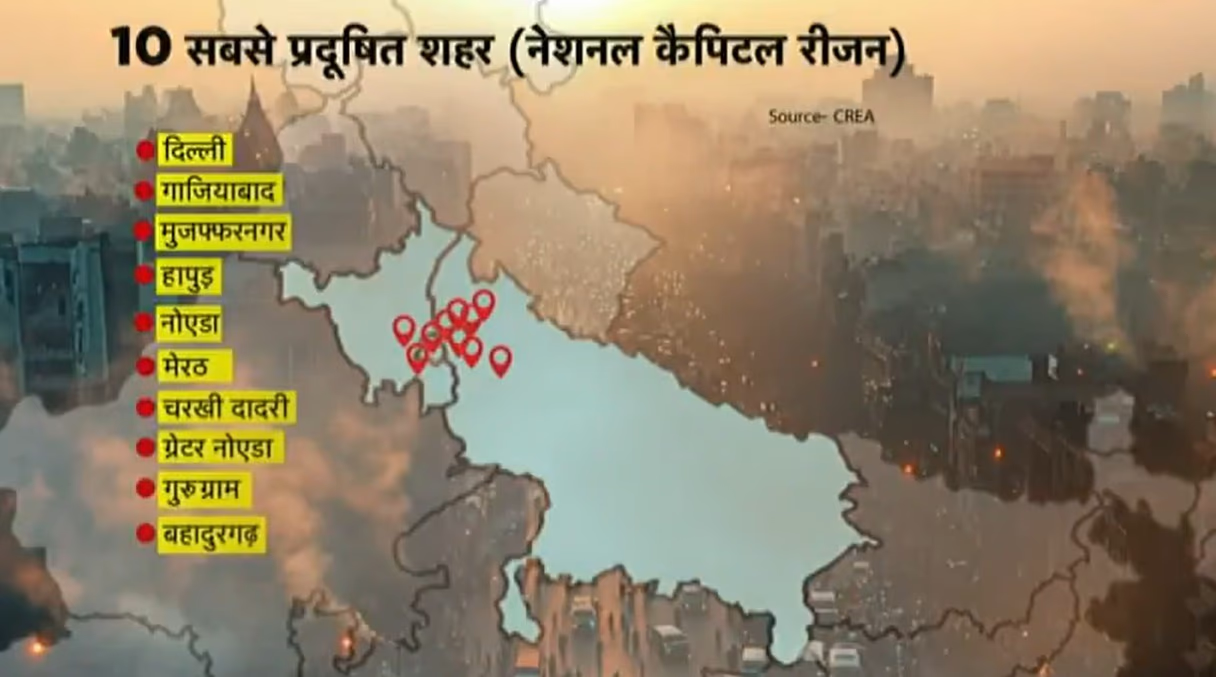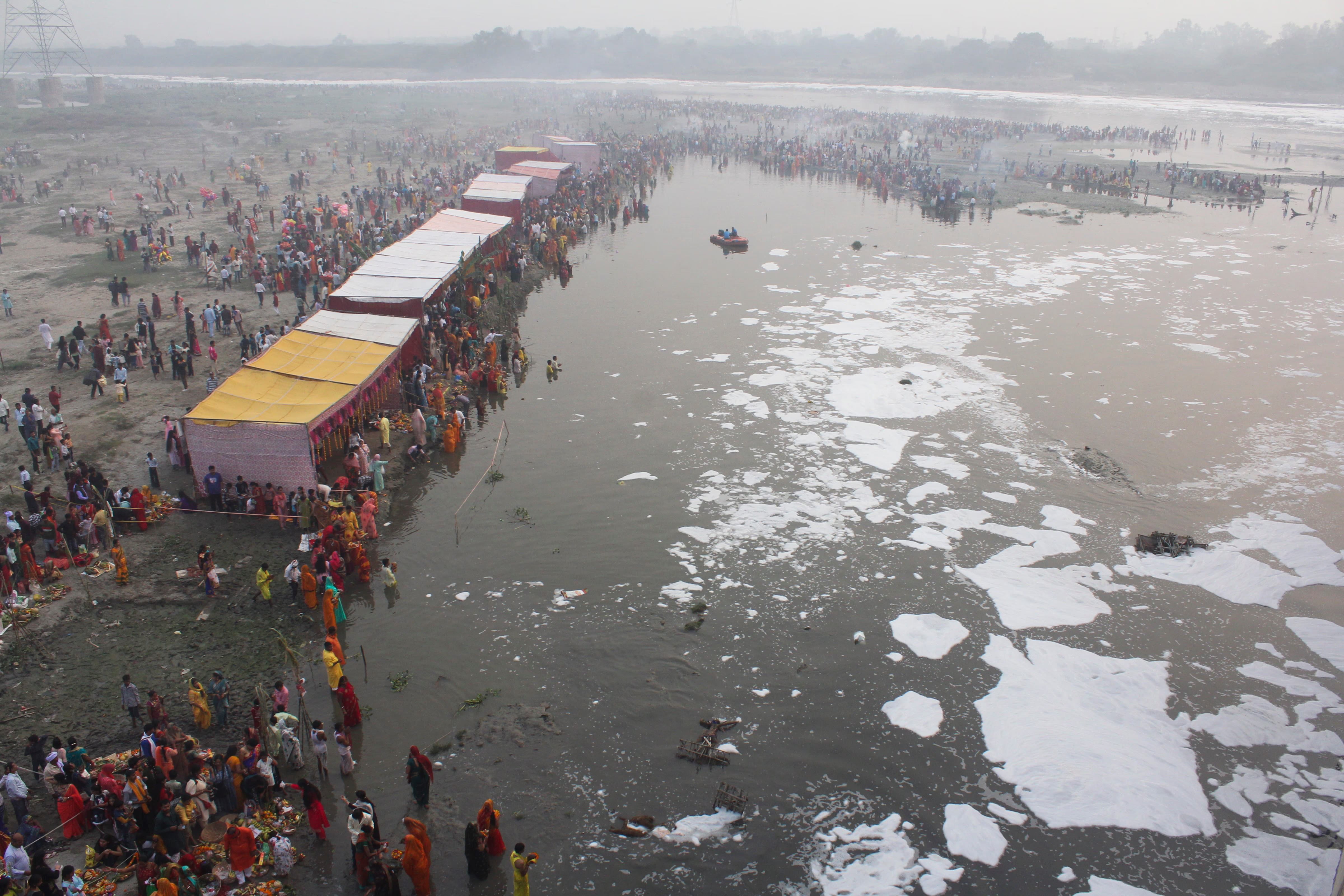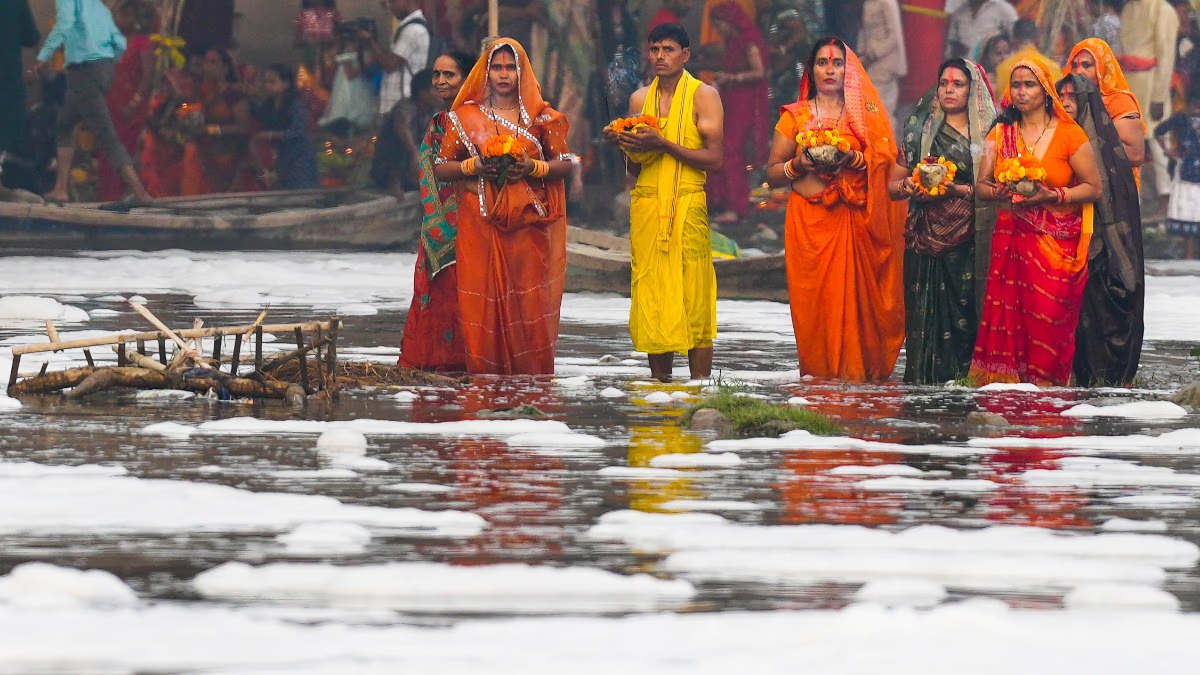Chhath festival fervor is visible across the nation. Devotees offered prayers to the sun on Thursday evening and will do so again on Friday morning. Yet, like every year, the pollution in rivers has become a concern and a subject of debate. During Chhath, the pollution in rivers grabs everyone's attention and raises questions. One prominent question is whether offering prayers in these polluted rivers amounts to disrespect to the deities?
A Reality Check Reveals Yamuna's 'Toxic' Water
The Aaj Tak team sourced water samples from three different locations along the Yamuna in Delhi, which were sent for lab testing. The findings show the Yamuna's water isn't even safe to touch, as it risks serious skin diseases. Drinking it could even be fatal.
Do These Images of Yamuna Raise Many Questions?
Look at the people celebrating Chhath in and around Delhi, and then glance at the Yamuna. How can one worship nature amid the polluted foam during Chhath? Isn't this disrespectful to our festivals and deities? The Yamuna river holds sacred mentions in the Ramayana, revered even by Sita Ji, traversed by Vasudeva to save Lord Krishna, and revered as Yamuna Maiya in India. Today, amidst its perilous pollution, many women celebrated the Chhath festival.

Source: aajtak
Discover the Extent of Yamuna's Pollution
Chhath is revered as the grand festival of sun worship, connecting people to nature. But amidst polluted air, polluted water, and contaminated surroundings, how can the worship of the sun and nature proceed faithfully? Each day, around 8 billion litres of waste and industrial discharge mix into the Yamuna's waters. This fact isn't lost on 'the authorities.' Yet, despite knowing, the toxic foam remains ignored, unchallenged, questioning if celebrating Chhath amidst such pollution isn't playing with Hindu sentiments?

Source: aajtak
Why Aren't Questions Being Raised?
In our country, religious sentiments are easily hurt over minor things, often sparking disputes over processions. Yet, seeing these images doesn't seem to affect anyone's religious sentiments. Nor is there an outcry for Sanatan Dharma. In places across Delhi, Uttar Pradesh, Bihar, Jharkhand, and Madhya Pradesh, devotees offered prayers in 'polluted rivers and ponds,' each filled with elements as dangerous as poison.
How Can This Be Considered True Worship?
When women offer prayers standing in the water in the mornings, if pollution cloaks the sun and the river has turned into a drain, how can this be deemed authentic worship? How can Lord Sun be pleased with offerings in contaminated waters?
Read Also:
The Mention of Chhath in Mahabharata
Various beliefs assert the Chhath Puja began in the Mahabharata era, when the Pandavas lost their empire, including the capital Indraprastha, what is now known as Delhi. To restore their dominion, Draupadi observed the Chhath fast, leading to success eventually. But today, in the same Delhi, Chhath is celebrated amidst the Yamuna's polluting froth. Women standing in the Yamuna offering 'Arghya' to the sun couldn’t see it due to the thick pollution haze.
The State of Rivers in India
In India, rivers are revered as mothers, yet out of 603 'rivers,' nearly 300 are heavily polluted. In contrast, American rivers, regarded simply as rivers, remain clean enough to reflect faces. However, in India, one only sees polluted water and murky, foamy rivers, like the revered Ganga Maiya, Yamuna Maiya, Godavari Maiya, and Narmada Maiya, left unguarded.
Illegal Occupation on Yamuna
The Yamuna, often called Yamuna Maiya, is now threatened in Delhi, where its 9,700 hectares of floodplain are illegally occupied with 5 to 7-storey buildings. Ironically, the occupants majorly identify with Sanatan Dharma, the very religion they profess to uphold, yet ignoring the sacredness of Yamuna Maiya.




